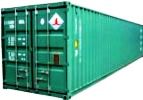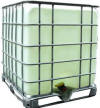|
Mubychem Group, established in 1976, is the pioneer manufacturer of Hydrated Lime Slaked Lime Calcium Hydroxide, Pharmaceutical, Fragrance & Flavor chemicals in India. Mubychem Group has several manufacturing facilities spread across Gujarat and Mumbai India and world wide contacts and toll manufacturers. We are exporting globally to countries like USA, Europe, UAE, South Africa, Tanzania, Kenya, Egypt, Nigeria, Uganda, Turkey, Mexico, Brazil, Chile, Argentina, Dubai etc. |
The participating units have one or more accreditations like FDA - GMP approval; ISO-9001 Certified; "REACH" Pre-registered; ISO-22000; Kosher Certified; Halal Certified; HACCP. We offer Pure & IP BP USP FCC Food Grade ACS AR Analytical Reagent Grades of Chemicals |
|







Hydrated Lime Slaked Lime Calcium Hydroxide Manufacturers, MSDS Sheet
Calcium Hydroxide BP USP IP ACS AR Analytical Reagent FCC Food grade Manufacturers
Calcium Hydroxide
Technical & Pure Slaked Lime, Hydrated Lime
Also IP BP Ph. Eur. USP ACS AR LR FCC Food Grades

Calcium Hydroxide MSDS Sheet, Material safety Data Sheet
1. Product Identification
Synonyms: Calcium hydrate; Calcium Hydroxide or Slaked Lime
CAS No.: 1305-62-0
Molecular Weight: 74.09
Chemical Formula: Ca(OH)2
2. Composition/Information on Ingredients
Ingredient: Calcium Hydroxide or Slaked Limemor Hydrated Lime
CAS No.: 1305-62-0 99
Percent: 100%
Hazardous: Yes
3. Hazards Identification
Emergency Overview
DANGER! HARMFUL IF SWALLOWED OR INHALED. CAUSES BURNS TO SKIN AND
EYES. CAUSES SEVERE IRRITATION TO RESPIRATORY TRACT.
----------------------------- -----------------------
Health Rating: - Moderate
Flammability Rating: - None
Reactivity Rating: - Moderate
Contact Rating: - Severe
Lab Protective Equip: GOGGLES & SHIELD; LAB COAT & APRON; VENT HOOD;
PROPER GLOVES
Storage Color Code: Green (General Storage)
Potential Health Effects
Inhalation:
Calcium Hydroxide or Slaked Lime causes irritation to the respiratory tract. Symptoms may include
coughing, shortness of breath. Can cause chemical bronchitis.
Ingestion:
Gastric irritant. Ingestion of Calcium Hydroxide or Slaked Lime may be followed by severe pain, vomiting,
diarrhea, and collapse. If death does not occur in 24 hours, esophageal
perforation may occur, as evidenced by fall in blood pressure and severe
pain. A narrowing of the esophagus may occur weeks, months, or years
after ingestion, making swallowing difficult.
Skin Contact:
Corrosive. May cause severe burns and blistering, depending on duration
of contact.
Eye Contact:
Corrosive. May produce severe irritation and pain. May induce
ulcerations of the corneal epithelium. Can cause blindness.
Chronic Exposure:
Prolonged or repeated skin contact may produce severe irritation or
dermatitis.
Aggravation of Pre-existing Conditions: Persons with pre-existing skin problems or impaired respiratory function
may be more susceptible to the effects of this substance.
4. First Aid Measures
Inhalation:
Remove to fresh air. If not breathing, give artificial respiration. If
breathing is difficult, give oxygen. Call a physician immediately.
Ingestion:
DO NOT INDUCE VOMITING. Give large quantities of water. Never give
anything by mouth to an unconscious person. Call a physician
immediately.
Skin Contact:
In case of contact with Calcium Hydroxide or Slaked Lime , wipe off excess material from skin then immediately
flush skin with plenty of water for at least 15 minutes. Remove
contaminated clothing and shoes. Wash clothing before reuse. Call a
physician immediately.
Eye Contact:
Immediately flush eyes with gentle but large stream of water for at
least 15 minutes, lifting lower and upper eyelids occasionally. Call a
physician immediately.
5. Fire Fighting Measures
Fire: Calcium Hydroxide or Slaked Lime is not considered to be a fire hazard. Use any means suitable for
extinguishing surrounding fire.
Explosion: Not considered to be an explosion hazard.
Fire Extinguishing Media:
Use any means suitable for extinguishing surrounding fire.
Special Information:
Wear self-contained breathing apparatus and protective clothing to
prevent contact with skin and clothing.
6. Accidental Release Measures
Ventilate area of leak or spill. Keep unnecessary and unprotected people away from area of spill. Wear appropriate personal protective equipment as specified in Section 8. Spills: Pick up and place in a suitable container for reclamation or disposal, using a method that does not generate dust. Do not flush caustic residues to the sewer. Carefully pick up solid with minimum of dusting and collect in metal container with covers with disposal. The trace amount of residue of Calcium Hydroxide or Slaked Lime can be flushed down drain.
7. Handling and Storage
Keep Calcium Hydroxide or Slaked Lime in a tightly closed container, stored in a cool, dry, ventilated area. Protect against physical damage. Isolate from incompatible substances. Containers of this material may be hazardous when empty since they retain product residues (dust, solids). Do not get in eyes, on skin, on clothing. Wash thoroughly after handling. Store away from acids.
8. Exposure Controls/Personal Protection
Airborne Exposure Limits: -OSHA Permissible Exposure Limit (PEL):
15 mg/m3 (total dust), 5 mg/m3 (respirable fraction)
-ACGIH Threshold Limit Value (TLV): 5 mg/m3
Ventilation System: A system of local and/or general exhaust is recommended to keep
employee exposures below the Airborne Exposure Limits. Local exhaust
ventilation is generally preferred because it can control the emissions
of the contaminant at its source, preventing dispersion of it into the
general work area.
Personal Respirators (NIOSH Approved): If the exposure limit is exceeded and engineering controls are not
feasible, a full face piece particulate respirator (NIOSH type N100
filters) may be worn for up to 50 times the exposure limit or the
maximum use concentration specified by the appropriate regulatory agency
or respirator supplier, whichever is lowest. If oil particles (e.g.
lubricants, cutting fluids. glycerin, etc.) are present, use a NIOSH
type R or P filter. For emergencies or instances where the exposure
levels are not known, use a full-face piece positive-pressure,
air-supplied respirator. WARNING: Air-purifying respirators do not
protect workers in oxygen-deficient atmospheres.
Skin Protection: Wear impervious protective clothing, including boots, gloves, lab coat,
apron or coveralls, as appropriate, to prevent skin contact.
Eye Protection: Use chemical safety goggles and/or full face shield where dusting or
splashing of solutions is possible. Maintain eye wash fountain and
quick-drench facilities in work area.
9. Physical and Chemical Properties
Appearance: Calcium Hydroxide or Slaked Lime white crystals or powder.
Odor: Odorless.
Solubility: 0.185 g/100 cc water @ 0C.
Specific Gravity: 2.24
pH: 12.4 (saturated solution)
% Volatiles by volume @ 21C (70F): 0
Boiling Point: Decomposes.
Melting Point: 580C (1076F)
Vapor Density (Air=1): No information found.
Vapor Pressure (mm Hg): No information found.
10. Stability and Reactivity
Stability: Calcium Hydroxide or Slaked Lime is stable under ordinary conditions of use and storage. Readily absorbs
carbon dioxide from air to form calcium carbonate.
Hazardous Decomposition Products: Decomposition (580C; 1076F) to form Calcium Oxide.
Hazardous Polymerization: Will not occur.
Incompatibilities: Violent reactions with maleic anhydride, nitro ethane, nitro
methane,
nitro paraffin, nitro propane, phosphorus. As a strongly alkaline
material, it is incompatible with acids.
Conditions to Avoid: Not Available
11. Toxicological Information
Oral Rat LD50: 7340 mg/kg; eye rabbit, standard Draize, 10 mg, severe;
investigated as a mutagen
--------\Cancer Lists\-------------------------------------------
------------------------------- NTP Carcinogen---
Ingredient--------------------- Known Anticipated IARC Category
------------------------------- -----
----------- ---------
Calcium Hydroxide (1305-62-0)
No ------- No ---------- None
12. Ecological Information
Environmental Fate: Calcium Hydroxide or Slaked Lime is not expected to significantly bio accumulate.
13. Disposal Considerations
Although not a listed RCRA hazardous waste, Calcium Hydroxide or Slaked Lime may exhibit one or more characteristics of a hazardous waste and require appropriate analysis to determine specific disposal requirements. Dispose of container and unused contents in accordance with federal, state and local requirements.
14. Transport Information
Not regulated.
15. Regulatory Information
--------\Chemical Inventory Status - Part 1\--------------------------------- Ingredient ------------------------------------ TSCA EC Japan Australia ----------------------------------------------- ---- --- ----- --------- Calcium Hydroxide (1305-62-0) ----------------- Yes Yes Yes Yes --------\Chemical Inventory Status - Part 2\--------------------------------- ------------------------------------------------------- --Canada-- Ingredient ------------------------------------ Korea DSL NDSL Phil. ----------------------------------------------- ----- --- ---- ----- Calcium Hydroxide (1305-62-0) ----------------- Yes Yes No Yes --------\Federal, State & International Regulations - Part 1\---------------- ----------------------------------------- -SARA 302- ------SARA 313------ Ingredient ------------------------------ RQ TPQ List Chemical Catg. ----------------------------------------- --- ----- ---- -------------- Calcium Hydroxide (1305-62-0) ----------- No No No No --------\Federal, State & International Regulations - Part 2\---------------- ----------------------------------------------------- -RCRA- -TSCA- Ingredient ------------------------------ CERCLA 261.33 8(d) ----------------------------------------- ------ ------ ------ Calcium Hydroxide (1305-62-0) ----------- No No No Chemical Weapons Convention: No; TSCA 12(b): No; CDTA: No SARA 311/312: Acute: Yes; Chronic: Yes; Fire: No; Pressure: No Reactivity: No (Pure / Solid)Australian Hazchem Code: None allocated.
Poison Schedule: None allocated.
OSHA: Hazardous by definition of Hazard Communication Standard
(29 CFR 1910.1200). EINECS: This product is on the European Inventory of
Existing Commercial Chemical Substances.
WHMIS (Canada): CLASS E: Corrosive solid.
DSCL (EEC):
R34- Causes burns. R41- Risk of serious damage to eyes. S24/25- Avoid
contact with skin and eyes. S26- In case of contact with eyes, rinse
immediately with plenty of water and seek medical advice. S28- After
contact with skin, wash immediately with plenty of water. S36/37/39-
Wear suitable protective clothing, gloves and eye/face protection. S45-
In case of accident or if you feel unwell, seek medical advice
immediately.
HMIS (U.S.A.):
Health Hazard: 2
Fire Hazard: 0
Reactivity: 0
Personal Protection: j
National Fire Protection Association (U.S.A.):
Health: 2
Flammability: 0
Reactivity: 0
Specific hazard:
Protective Equipment:
Gloves. Synthetic apron. Vapor and dust respirator. Be sure to use an
approved/certified respirator or equivalent. Wear
appropriate respirator when ventilation is inadequate. Splash goggles.
16. Other Information
Disclaimer:
**********************************
Our company provides this Slaked Lime or Hydrated Lime or Calcium Hydroxide MSDS
information sheet contained herein in good faith but makes no representation as to its
comprehensiveness or accuracy. This Calcium Hydroxide or Hydrated Lime or Slaked Lime MSDS
sheet is intended only as a guide to the
appropriate precautionary handling of the material by a properly trained person
using this product. Individuals receiving the information must exercise their
independent judgment in determining its appropriateness for a particular
purpose.
**********************************
Slaked Lime Hydrated Lime Calcium Hydroxide manufacturers:
MUBYCHEM GROUP
CHINCHBUNDER, MUMBAI 400009, INDIA
TEL: (OFFICE)
91-22-23774610, 91-22- 23723564. 91-22-23728264
e-mail: info@mubychem.com
USA & Canadian Customers may e-mail: us@mubychem.com

Copyright
and Usual
Disclaimer
is Applicable.
Global or International Calcium Hydroxide or Hydrated Lime or Slaked Lime Suppliers, Exporters, Importers, Manufacturers
If I give you “My Word” Nobody can undo it.
If I sign an “Agreement” my Lawyer will undo it
Perfection is made up of small thing but it is not small.